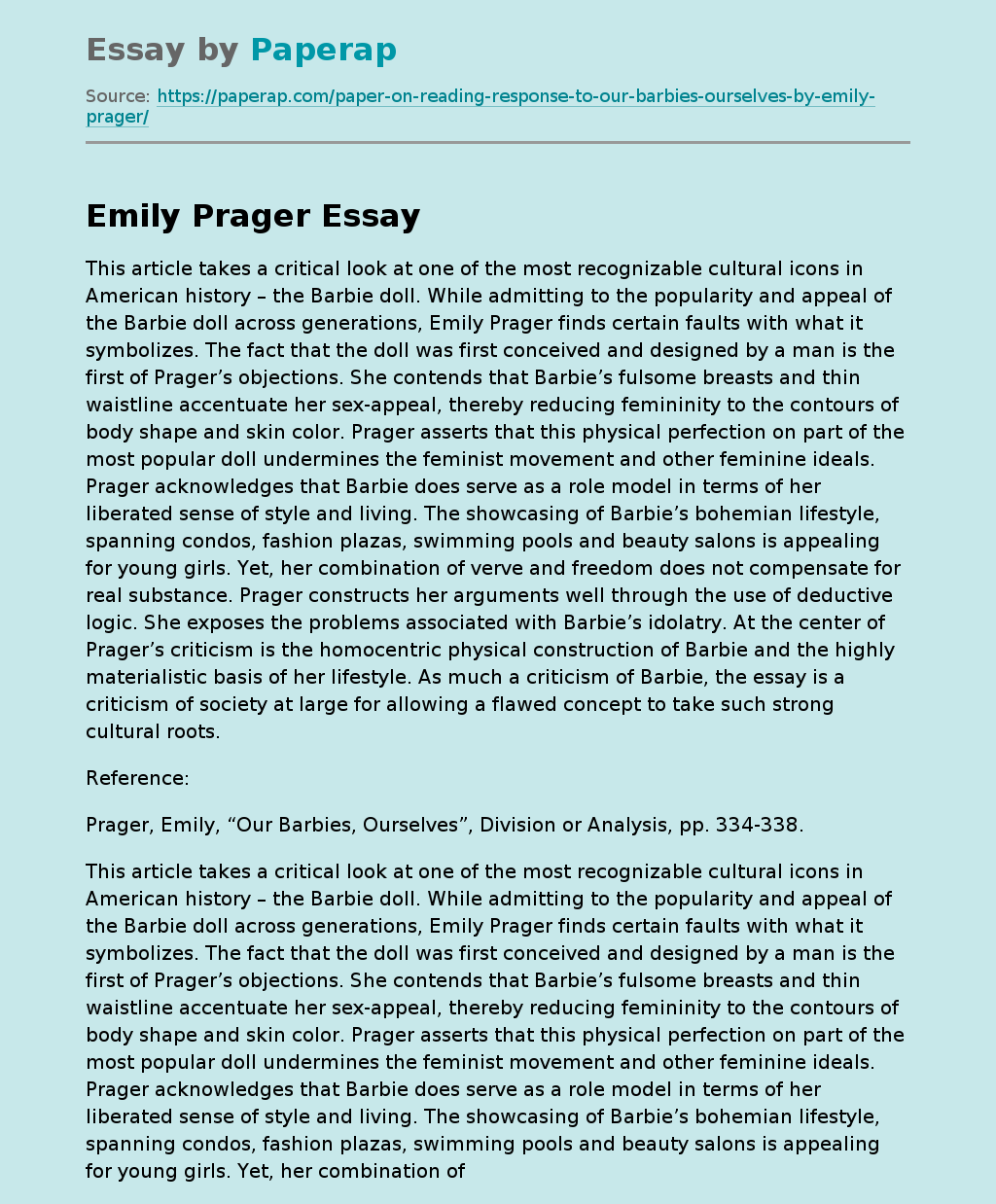Critiquing Barbie: A Cultural Icon
This article takes a critical look at one of the most recognizable cultural icons in American history – the Barbie doll.
While admitting to the popularity and appeal of the Barbie doll across generations, Emily Prager finds certain faults with what it symbolizes. The fact that the doll was first conceived and designed by a man is the first of Prager’s objections. She contends that Barbie’s fulsome breasts and thin waistline accentuate her sex-appeal, thereby reducing femininity to the contours of body shape and skin color.
Prager asserts that this physical perfection on part of the most popular doll undermines the feminist movement and other feminine ideals. Prager acknowledges that Barbie does serve as a role model in terms of her liberated sense of style and living. The showcasing of Barbie’s bohemian lifestyle, spanning condos, fashion plazas, swimming pools and beauty salons is appealing for young girls. Yet, her combination of verve and freedom does not compensate for real substance.
Prager constructs her arguments well through the use of deductive logic. She exposes the problems associated with Barbie’s idolatry. At the center of Prager’s criticism is the homocentric physical construction of Barbie and the highly materialistic basis of her lifestyle. As much a criticism of Barbie, the essay is a criticism of society at large for allowing a flawed concept to take such strong cultural roots.
Reference:
Prager, Emily, “Our Barbies, Ourselves”, Division or Analysis, pp. 334-338.
This article takes a critical look at one of the most recognizable cultural icons in American history – the Barbie doll. While admitting to the popularity and appeal of the Barbie doll across generations, Emily Prager finds certain faults with what it symbolizes. The fact that the doll was first conceived and designed by a man is the first of Prager’s objections. She contends that Barbie’s fulsome breasts and thin waistline accentuate her sex-appeal, thereby reducing femininity to the contours of body shape and skin color. Prager asserts that this physical perfection on part of the most popular doll undermines the feminist movement and other feminine ideals. Prager acknowledges that Barbie does serve as a role model in terms of her liberated sense of style and living. The showcasing of Barbie’s bohemian lifestyle, spanning condos, fashion plazas, swimming pools and beauty salons is appealing for young girls. Yet, her combination of verve and freedom does not .
Emily Prager
Critiquing Barbie: A Cultural Icon. (2019, Dec 05). Retrieved from https://paperap.com/paper-on-reading-response-to-our-barbies-ourselves-by-emily-prager/

